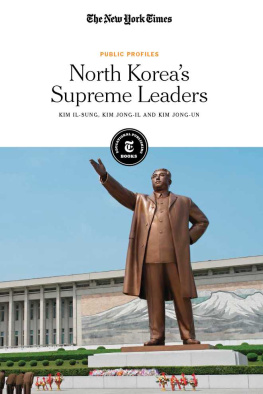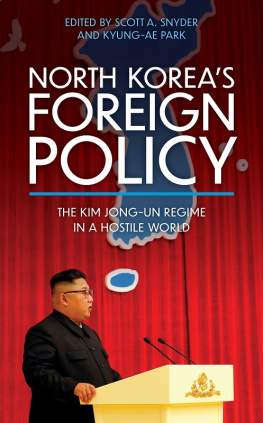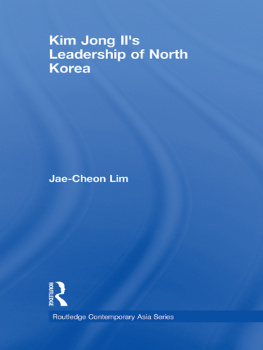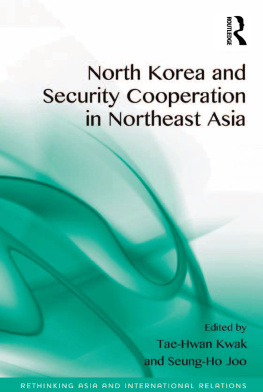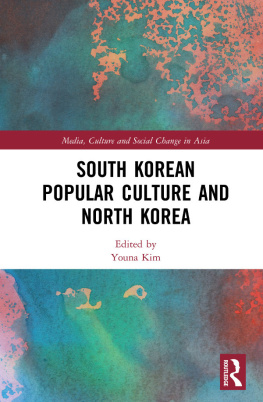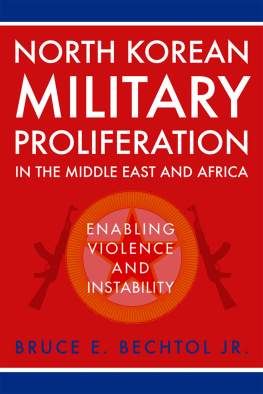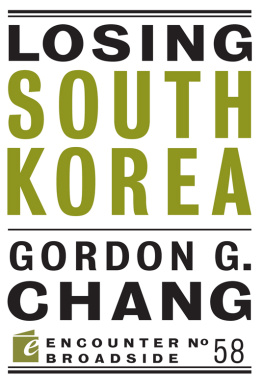THE LAST DAYS OF KIM JONG-IL
ALSO BY BRUCE E. BECHTOL, JR.
Defiant Failed State: The North Korean Threat to International Security
Red Rogue: The Persistent Challenge of North Korea
Confronting Security Challenges on the Korean Peninsula (editor)
The Quest for a Unified Korea: Strategies for the Cultural and Interagency Process (editor)
RELATED TITLES FROM POTOMAC BOOKS
Crisis on the Korean Peninsula
Christoph Bluth
Korea on the Brink: A Memoir of Political Intrigue and Military Crisis
John A. Wickham, Jr.
Building Six-Party Capacity for a WMD-Free Korea
Jacquelyn K. Davis, Charles M. Perry, and James L. Schoff
THE LAST DAYS OF KIM JONG-IL
The North Korean Threat in a Changing Era
BRUCE E. BECHTOL, JR.

Copy 2013 by Bruce Bechtol, Jr.
All rights reserved
Potomac Books is an imprint of the University of Nebraska Press
Library of Congress Cataloging-in-Publication Data
Bechtol, Bruce E., 1959
The last days of Kim Jong-il : the North Korean threat in a changing era / Bruce E.
Bechtol, Jr. First edition.
pages cm
Includes bibliographical references and index.
ISBN 978-1-61234-611-3 (hardcover : alk. paper)
ISBN 978-1-61234-612-0 (electronic)
1. Kim, Chong-il, 19422011. 2. Korea (North)Politics and government19943.
United StatesForeign relationsKorea (North) 4. Korea (North)Foreign relationsUnited States. 5. Korea (North)Military policy. 6. Security, International. I. Title.
DS935.775.B43 2013
951.93051092dc23
2012049626
Printed in the United States of America on acid-free paper that meets the American National Standards Institute Z39-48 Standard.
Potomac Books
22841 Quicksilver Drive
Dulles, Virginia 20166
First Edition
10 9 8 7 6 5 4 3 2 1
For Jung-eun, uncommon stress was a common virtue.
And for Sara Beth, the apple of my eye, the center of my life, the youngest in our family, and the inspiration for this book.
CONTENTS
ILLUSTRATIONS
PREFACE
The Kim Jong-il era in North Korea began with the death of his father, Kim Il-sung, in 1994 and ended with his own death in 2011 after suffering from a variety of ailments. While the United States was never on friendly terms with North Korea, the Kim Jong-il era represented a time when relations were perhaps more tense than they had been since the end of the Korean Conflict in 1953. That said, North Korea has rarely, if ever, been at the top of Washingtons national security priorities. Even today, as North Korea has a proven nuclear weapons capability, one of the largest militaries in the world, a potentially unstable dynastic government, and a record of proliferation that clearly identifies it as a rogue nation, other countries and issues play a more dominant role in the national security agenda of Washington. But North Korea went through some quite profound adjustments in both its domestic and foreign policy actions during Kim Jong-ils final years that will eventually bring Pyongyang (once again) to the forefront of Washingtons foreign policy priorities.
North Korea exacerbated tension in the region and created questions for the international community during the last years of the Kim Jong-il era. The world watched as little information seeped out of Pyongyang following the leaders stroke, which left him bedridden for several months during 2008 and perhaps early 2009. The worldand the regionsat on edge as the North Korean military twice conducted violent provocations in 2010 that set relations with its neighbor to the south back significantly. North Korea (finally) admitted to a highly enriched uranium nuclear program, which, combined with its plutonium program, gave it the potential not only to strike targets in the region but also to proliferate elements of the program to other rogue states. And the dynastic succession process occurred in a way that had many analysts scratching their heads. Thus, the final years of the Kim Jong-il era rate analysis and lessons learned for policy priorities and planning today.
In this book I will address several key issues that arose during the final years of the Kim Jong-il regime. These issues are important because the Democratic Peoples Republic of Korea (DPRK), by its very nature, is a system and a government that cannot undergo extreme or sudden change. Thus these challenges and issues that North Korea presented as Kim Jong-il lived his final years profoundly affectedand continues to affectwhat is happening on the Korean Peninsula today. What kind of a threat does the North Korean military present to the region, and how does its internal role influence the power of the new leadership in Pyongyang? Why has North Korea stepped up its violent military provocations, particularly in the Northern Limit Line area of the West Sea, and what is the strategy behind this move? How do advances in North Koreas nuclear program impact security and stability in the region, and how should nation-states with interests in Northeast Asia, particularly the United States, plan for a possible nuclear attack? How have North Koreas dealings with non-state actors that engage in terrorism, and the nation-states that support them, affected stability in other world regions, and what are North Koreas motivations for this activity? This book will address all of these issues and give the reader the opportunity to gain perspective and make assessments regarding the future of North Korea and the Korean Peninsula as a whole.
I have written this book for functional and regional specialists, international security specialists, military planners, scholars in the region, and anyone who has an interest in gaining perspectives about the great effect the final years of the Kim Jong-il era have had and will continue to have on events in the Korean Peninsula. The information in this book and its assessments will be of interest to analysts in the United States and in East Asia. As such, the goal of this book is to present a current and a recent historical picture that is both relevant and predictive. It is my hope that because of the style and method of writing this book, it will be of interest not simply to those who have a theoretical or scholarly interest in the region but also to those who have a practical interest in solving the complicated issues that the continued existence of the DPRK presents.
I am grateful to a number of people who have been helpful as I embarked on the journey to write this book. Dr. Doug Streusand at the Marine Corps University is both a scholar with a national security background and a friend who gave me profound context as I engaged in the writing of this work. Dr. Jerre Wilson, the vice president of the Marine Corps University, provided encouragement and engaged me with other scholars who were quite useful for this project. Carol-Anne Parker was invaluable in providing administrative support for my manuscript. I am also deeply indebted to Maj. Gen. Don Gardner, USMC (Ret.), the president emeritus of the Marine Corps University. His leadership and dedication to the faculty there will have a lasting effect on its success for many years to come.
A number of regional specialists have furnished invaluable insights to me as I pursued this project. David S. Maxwell, who is now at the Center for Peace and Security Studies at Georgetown University and is also a retired U.S. Army Colonel, provided useful collaboration for many aspects of my research. Dr. Chun Seong Whun of the Korea Institute for National Unification is a specialist with important insights on North Korea. Chuck Downs, the retired executive director of the Committee for Human Rights in North Korea, and Greg Scarlatoiu, the current executive director, were both helpful in sharing perspectives relating to human rights and society in North Korea. The specialist to whom I owe the most for this research and much of what I have done in my study of North Korea is Robert Collins, a retired senior staff officer in the Combined Forces Command, who has mentored not only me but also dozens of other action officers, international relations specialists, and senior military officers for many years. His perspectives and analyses regarding the way the North Korean government operates, the motivations for its policy goals, and the intent behind its often confusing actions were key contributions to the research I conducted for this work.
Next page

